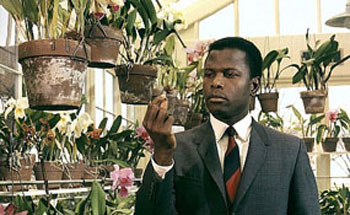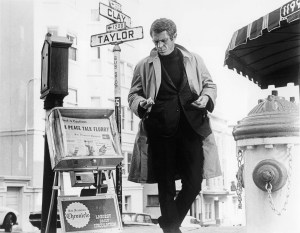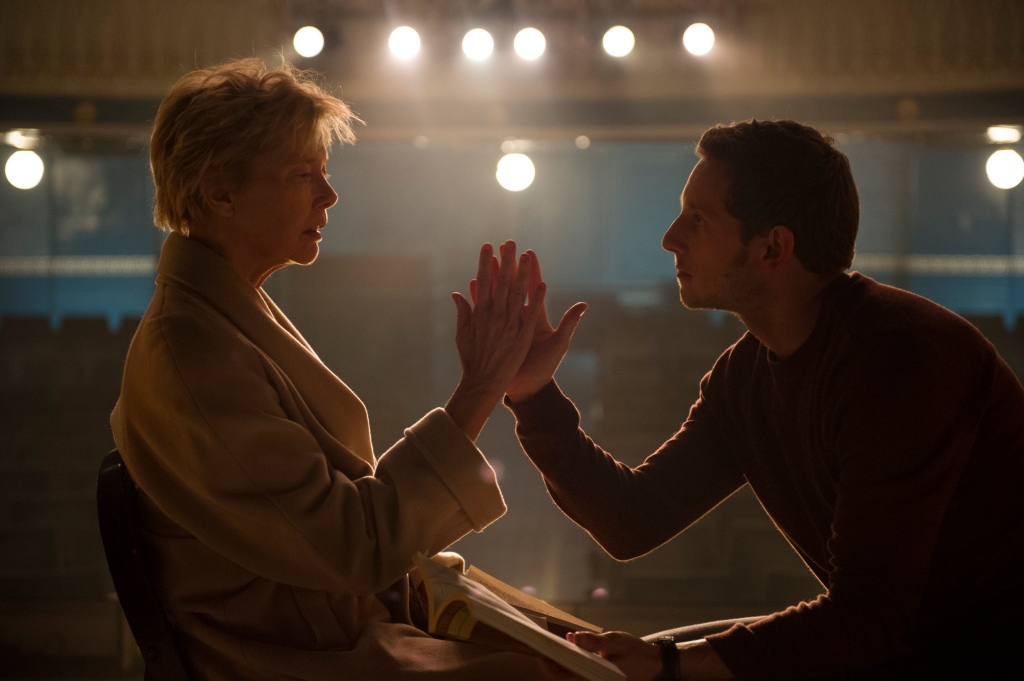First we begin with the casting: perfect. Setting aside for the moment what Mr. Poitier has brought to the American socio-political consciousness, he is physically perfect for Mr. Tibbs. He is handsome, tall, fit, and has the posture of a military man. In the film, he looks every bit the star homicide detective from a big Northern city – a simple, comfortable, slim-cut dark suit, well-fitted shirt, repp tie (John Jay College, anyone?) and sharp shoes which defy the dustiness of the Southern town he is stuck in. He means business, he looks professional, and he never sweats – that jacket stays on in the heat of the night. The sartorial polish underscores his badasser-y – don’t mess with Mr. Tibbs! The incompetent group of cops who surround him wear short-sleeve shirts and ill-fitting trousers, and still manage to sweat through the day (there’s a running joke in the film about air-conditioners and fans). Yes, they despise Mr. Tibbs because he’s black; but those perfectly-cast actors also manage to convey a sense of awe and envy for Tibbs’ professionalism, intelligence, and style. The town’s upper-class know it, too: Endicott, the Mayor, and Mrs. Colbert, with the tacit knowledge that he is firmly of the educated classes, treat him with some back-handed respect.
Bullitt is class in a different way – he is resolutely working class, and, apart from his girlfriend, aligns himself with San Francisco’s working citizenry – overworked hospital staff, the deli guy, his police colleagues. Where Tibbs is Yankee Ivy Cool, Frank is West Coast Ivy: navy blue cashmere turtleneck sweater, brown tweed jacket, Levi’s, and desert boots. Sartorially he conveys his outlaw approach to law enforcement: everyone around him, including the guys who work for him, wear a tie and follow orders. He doesn’t have to. Despite his frequent insubordination, he still garners a certain measure of respect, partly because he treats people with respect, partly because of his extraordinary detective powers, and partly for the dapper formality of the shawl-collar cardigan. Like Poitier, Mr. McQueen’s physicality also makes him perfect for this part – lean, agile, observant.
In the time machine that takes us back to the 1960s, someone would cast these two in the ultimate crime film, with Poitier as the formidable statesman of a police captain, and McQueen as the black sheep lieutenant. The verbal sparring would be delicious: Poitier’s gravelly, crisp sentences versus McQueen’s stinging zingers. But most of all, the style would be unparalleled – gabardine on one, denim on the other, loafers on the captain, chukkas on the lieutenant – and we have no choice but to root for both of them.
Read more:
Bullitt/In the Heat of The Night







Leave a comment